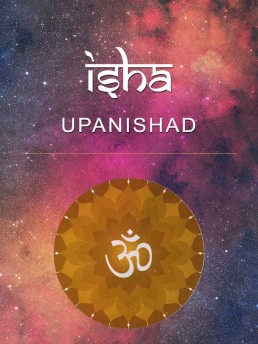तत्र को मोहः कः शोक एकत्वमनुपश्यतः ॥ ७ ॥
tatra ko mohaḥ kaḥ śoka ekatvamanupaśyataḥ || 7 ||
Isha Upanishad Home
Isha – Sri Shankara’s Introduction
Isha – Invocation
Isha – 1-īśāvāsyamidaṃ sarvaṃ
Isha – 2-kurvanneveha karmāṇi
Isha – 3-asuryā nāma te lokā
Isha – 4-anejadekaṃ manaso
Isha – 5-tadejati tannaijati
Isha – 6-yastu sarvāṇi
Isha – 7-yasminsarvāṇi bhūtāny
Isha – 8-sa paryagāc chukram
Isha – 9-andhantamaḥ praviśanti
Isha – 10-anyad evāhur vidyayā
Isha – 11-vidyāṁ cāvidyāṁ ca
Isha – 12-andhaṁ tamaḥ praviśanti
Isha – 13-anyad evahūḥ
Isha – 14-sambhūtiṁ ca vināśaṁ
Isha – 15-hiraṇmayena pātreṇa
Isha – 16-pūṣann ekarṣe yama
Isha – 17-vāyur anilam amṛtam
Isha – 18-agne naya supathā

Commentary by Sri Adi Sankaracharya – Translated in English
This other text also expresses the same purport. The word ‘Yasmin’ means either ‘when’ or ‘in which Atman.’ When all the Bhutas have become one with the Atman, owing to the knowledge of the Atman, then or in the case of the Atman, how can there he perplexity or grief? Perplexity and grief, the seed of all desire and Karma, affect the ignorant, hut not him who sees the oneness, pure and like the sky. The negation of perplexity and griefthe effect of ignorancebeing shown by the form of a question, the total uprooting of all samsara with its seed has been indicated.
Commentary by Swami Sivananda
This Mantra further explains the idea contained in Mantra 6. Both the words Vijanata in Mantra 1.1.7।। and Anupasyati in Mantra 6 have the same significance. Mere intellectual assent that the one Self abides in all beings will not do. Actual Self-realisation or direct perception (Aparoksha Anubhuti) is indispensably reisite. In verse 6 it is said that the Knower of Brahman becomes fearless. Here it is said that the same Knower transcends delusion and sorrow. These are the fruits of attaining Brahma-Jnana.
‘Tarati Sokam atmavit-The knower of Atman crosses over grief’, is the emphatic declaration of the Srutis. The three knots (Hridaya-granthi) are Avidya, Kama, Karma (ignorance, desire and action ). A worldly man is drowned in delusion and sorrow on account of the three knots. When these three knots are destroyed by realising unity or oneness, by realising that all the Bhutas have become one with the Atman, how can there be delusion and grief in the knower of the Atman? Absolutely impossible. He always rejoices in the bliss of the Atman. Even heaviest sorrow cannot shake him a bit. He stands adamantine. Gita says: ‘Yasmin sthito na duhkhena gurunapi vichalyate -wherein established, he is not shaken even by heavy sorrow.’
Ishavasya Upanishad – Verse 7 – Isha – 7-yasminsarvāṇi bhūtāny – In Sanskrit with English Transliteration, Meaning and Commentary by Adi Shankaracharya (Sankara Bhashya) and Swami Sivananda – Ishavasya-7
